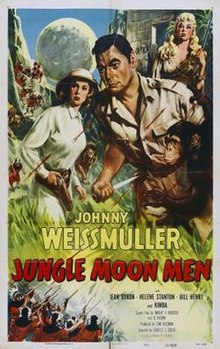
Cheeta is a chimpanzee character that appeared in numerous Hollywood Tarzan films of the 1930s–1960s, as well as the 1966–1968 television series, as the ape sidekick of the title character, Tarzan. Cheeta has usually been characterized as male, but sometimes as female, and has been portrayed by chimpanzees of both sexes.

Alexander Crichlow Barker Jr., known as Lex Barker, was an American actor. He was known for playing Tarzan for RKO Pictures between 1949 and 1953, and portraying leading characters from Karl May's novels, notably as Old Shatterhand in a film series by the West German studio Constantin Film. At the height of his fame, he was one of the most popular actors in German-speaking cinema, and received Bambi Award and Bravo Otto nominations for the honor.

Monogram Pictures Corporation was an American film studio that produced mostly low-budget films between 1931 and 1953, when the firm completed a transition to the name Allied Artists Pictures Corporation. Monogram was among the smaller studios in the golden age of Hollywood, generally referred to collectively as Poverty Row. Lacking the financial resources to deliver the lavish sets, production values, and star power of the larger studios, Monogram sought to attract its audiences with the promise of action and adventure.

Sam Katzman was an American film producer and director. Katzman's specialty was producing low-budget genre films, including serials, which had disproportionately high returns for the studios and his financial backers.

Tom Tyler was an American actor known for his leading roles in low-budget Western films in the silent and sound eras, and for his portrayal of superhero Captain Marvel in the 1941 serial film The Adventures of Captain Marvel. Tyler also played Kharis in 1940's The Mummy's Hand, a popular Universal Studios monster film.

Nina Foch was an American actress who later became an instructor. Her career spanned 6 decades, consisting of over 50 feature films and over 100 television credits. She was the recipient of numerous accolades, including an Academy Award nomination for Best Supporting Actress, and a National Board of Review Award for Best Supporting Actress. Foch established herself as a dramatic actress in the late 1940s, often playing cool, aloof sophisticates.

Jungle Jim is the fictional hero of a series of jungle adventures in various media. The series began on January 7, 1934, as an American newspaper comic strip chronicling the adventures of Asia-based hunter Jim Bradley, who was nicknamed Jungle Jim. The character also trekked through radio, film, comic book and television adaptations. Notable was a series of films and television episodes in which Johnny Weissmuller portrayed the safari-suit wearing character, after hanging up his Tarzan loincloth. The strip concluded on August 8, 1954.
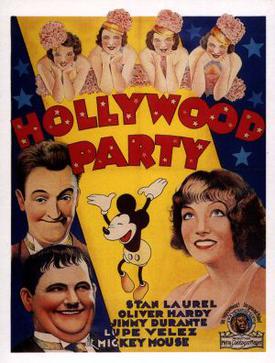
Hollywood Party, also known under its working title of The Hollywood Revue of 1933 and Star Spangled Banquet, is a 1934 American pre-Code musical film starring Laurel and Hardy, The Three Stooges, Jimmy Durante, Lupe Vélez and Mickey Mouse. It was distributed by Metro-Goldwyn-Mayer. Each sequence featured a different star with a separate scriptwriter and director assigned.
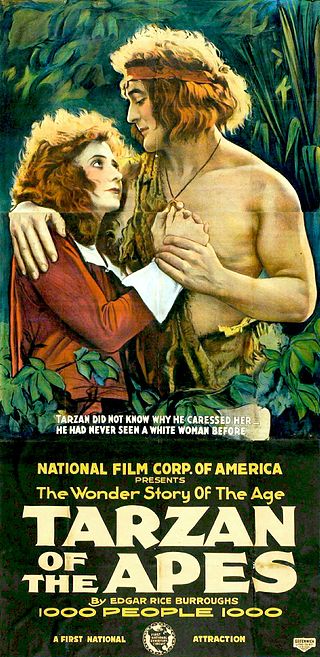
Tarzan, a fictional character created by Edgar Rice Burroughs, first appeared in the 1912 novel Tarzan of the Apes, and then in twenty-four sequels by Burroughs and numerous more by other authors. The character proved immensely popular and quickly made the jump to other media, first and most notably to comics and film.

Rick Vallin was an actor who appeared in more than 150 films between 1938 and 1966.

Jungle Jim is a 1948 American adventure film directed by William Berke and starring Johnny Weissmuller. It is based on Alex Raymond's Jungle Jim comic strip and was distributed by Columbia Pictures. It is the first picture in the Jungle Jim series that consists of 16 films originally released between 1948 and 1955.

Devil Goddess (1955) is the sixteenth and final Jungle Jim film produced by Columbia Pictures. It features Johnny Weissmuller in his third and last performance as the protagonist adventurer Johnny Weissmuller, and his final film as well. It co-starred Ed Hinton and William Tannen as the film's antagonists, Leopold and Nels Comstock, respectively. Angela Stevens also stars. The film was directed by Spencer G. Bennet and written by Dwight Babcock and George H. Plympton.

Cannibal Attack is a 1954 American adventure film, the fourteenth Jungle Jim film produced by Columbia Pictures. The film features Johnny Weissmuller in his inaugural performance as the protagonist adventurer Johnny Weissmuller, a character previously called "Jungle Jim." The film also features Judy Walsh. It was directed by Lee Sholem and written by Carroll Young. Filmed at the Los Angeles County Arboretum and Botanic Garden, there are no cannibals in the film
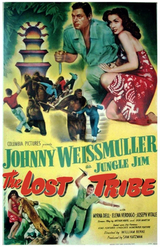
The Lost Tribe (1949) is the second Jungle Jim film produced by Columbia Pictures. The film features Johnny Weissmuller in his second performance as the adventurer Jungle Jim, co-starring Myrna Dell and Elena Verdugo, along with Joseph Vitale and George J. Lewis as the film's antagonists. It was directed by William Berke and written by Don Martin and Arthur Hoerl.
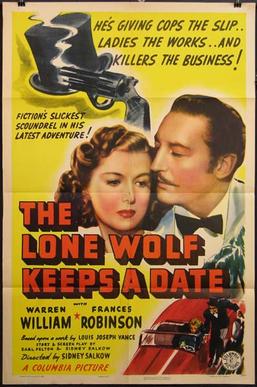
The Lone Wolf Keeps a Date is a 1940 American mystery crime film directed by Sidney Salkow and starring Warren William, Frances Robinson, Bruce Bennett and Eric Blore. It is the sixth Lone Wolf film produced by Columbia Pictures. It features William in his fourth appearance as the title character and Edward Gargan, Lester Matthews and Don Beddoe as the film's antagonists. The screenplay was written by Salkow and Earl Felton.

Fury of the Congo (1951) is the sixth Jungle Jim film produced by Columbia Pictures. It features Johnny Weissmuller in his sixth performance as the protagonist adventurer Jungle Jim. The film was directed by William Berke and written by Carroll Young.
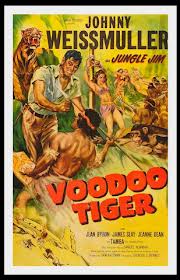
Voodoo Tiger is a 1952 American adventure film directed by Spencer G. Bennet and starring Johnny Weissmuller in his ninth performance as the protagonist adventurer Jungle Jim. It was written by Samuel Newman and produced by Columbia Pictures. It features James Seay as the film's antagonist. Jean Byron also stars.
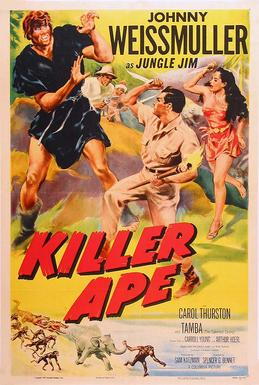
Killer Ape (1953) is the twelfth Jungle Jim film produced by Columbia Pictures. It features Johnny Weissmuller in his twelfth performance as the protagonist adventurer Jungle Jim. Carol Thurston also stars. The film was directed by Spencer G. Bennet and written by Arthur Hoerl and Carroll Young.

The Medico of Painted Springs is a 1941 American Western film produced by Columbia Pictures. Based on the novel of the same name by James Lyon Rubel, the film stars Charles Starrett, Terry Walker, Ben Taggart, Wheeler Oakman, and the Simp-Phonies in a cameo appearance. It was directed by Lambert Hillyer and written by Wyndham Gittens and Winston Miller. In the film, Starrett's character, Dr. Steven Monroe, travels to a tumultuous Painted Springs and attempts to resolve a raging conflict between two camps – the cattlemen and the sheep ranchers.
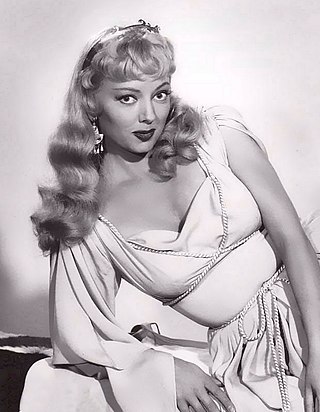
Helene Stanton was an American singer and actress. Her career began as an opera singer for the Cosmopolitan Opera Company in Philadelphia, before moving to Hollywood, where she became a singer of popular music. In 1949, she married silent film actor Ken Harlan, but the marriage broke down and they divorced four years later in 1953.
